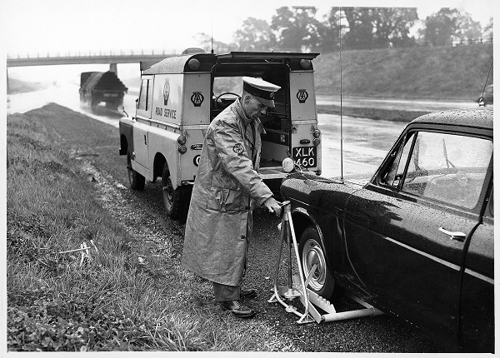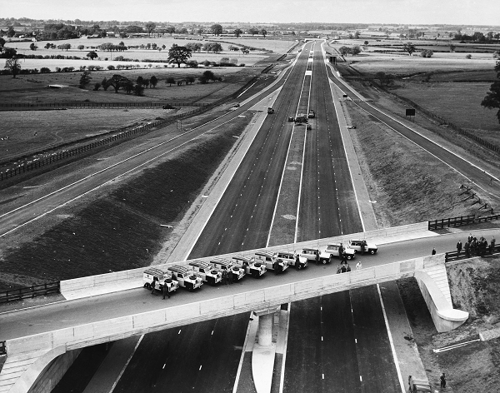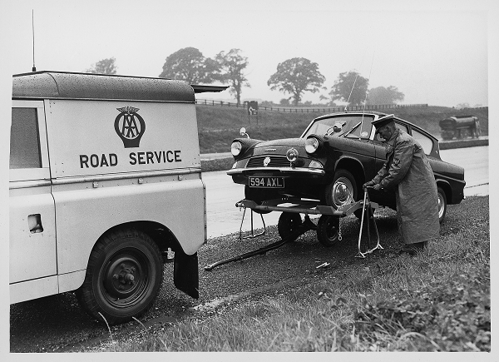THE FIRST TEN YEARS OF AA LAND-ROVERS
07 March 2025
The story so far – it is 1949, the weather is vile and your pre-war Morris Eight, held together with hope and masking tape, has ceased to proceed in a remote outer London suburb. Luckily, you are near a telephone box – and you are a member of the Automobile Association. A 3d call (“Press Button A, caller”) means help will soon be on the way, but it arrives not in the form of a motorcycle-sidecar combination but as a Land-Rover...

The Association acquired their first four-wheeled vehicles in 1946 when two Bedford vans formed their new “After Dark Rescue Squad”. They worked between 1800hrs and 0600hrs and proved very popular. The Night Patrols did not attend accidents or stricken cars at the home of a member, but the AA’s service was still invaluable for many drivers. In the late 1940s, garages offering a nighttime service were very unusual.
In July 1949, the AA replaced the Bedfords with Land-Rovers based at their Bayham Street depot in Camden Town. The Association believed they were better suited to London duties than their predecessors: less cumbersome and with 4WD capacity for towing duties. The distinctive yellow and black paintwork was devised to echo the AA motorcycle’s livery.

The Land-Rovers' equipment, ranged from a tailboard-mounted vice and jerry cans of oil, water and petrol to a wheel brace and a slave battery for jump-starting. They also featured a two-way wireless system. At that time, AA motorcycle patrols would travel between two AA telephone boxes on each shift and call the Head Office for news of breakdowns.
As an example of the Land-Rovers' work, the AA told the press on the 28th December 1949 that of the 309 motorists the Night Patrols aided over Christmas, over 100 were suffering from a flat battery. The London service was so successful that the Association introduced them to Birmingham in 1951 and Leeds in 1952.
The AA went on to deploy Land-Rovers across the UK, and they became especially associated with Highland Patrols in Scotland. Autocar of the 8th August 1958 reported Automobile Association Land-Rovers had “gone to the rescue of over 160,000 members in trouble on lonely Highland roads in the last five years”.

The 5th December 1958 saw the opening of the Preston bypass, the UK’s first motorway, followed by the M1 on the 2nd November 1959. Automobile Association ‘Motorway Patrol’ Land-Rovers came to the aid of drivers who did not heed the advice of the AA’s handy guide to the new roads. “Never before have motorists in Britian had the opportunity of travelling at relatively high speeds for a long period”.
One journalist wrote that on the M1’s opening day “The Automobile Association motorway control centre, an ultra-modern articulated trailer caravan near Newport Pagnell, was kept busy all day with calls”. The AA kept in contact by radio with a helicopter, a spotter ‘plane and the Land-Rovers assisting motorists whose engines had expired, or who ran out of petrol. By the 30th November 1959, the Association’s motorway control unit at the Broughton fly-over stated that 1,000 breakdowns had been reported.
Today, a dedicated group of current and former Automobile Association employees keep their Heritage vehicles on the road. The Fleet Engineer, George Flinton, is the custodian of their original Land Rover, KLX 770. He recently told The Telegraph it is “a much-loved vehicle and one of four Land Rovers we’ve preserved from our extensive motoring history”.
Meanwhile, in 1949, our Morris Eight owner is back on the road. And always mindful of the adage, “If a patrolman does not salute – stop and ask the reason why”.
With thanks to the Automobile Association for their time - https://www.theaa.com/ - and permission to use the images in this blog.
